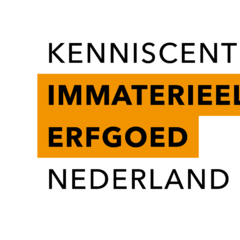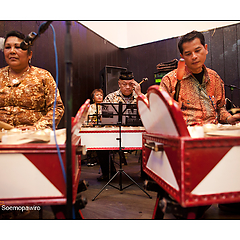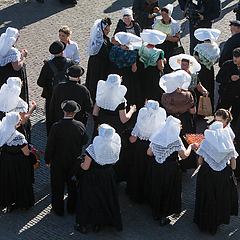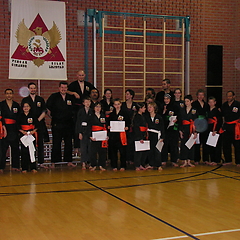On Sunday afternoons from May to October the puppet show on Dam Square in Amsterdam is played by a puppeteer and an assistant. The puppeteer works completely by ear, doing all the voices, characters and movements of the puppets. Because the puppeteer can't see anything, the assistant watches outside the puppet theatre, while rattling with his typical copper money collector, thus asking for a small fee from the audience.
There are seven permanent figures in the puppet show on Dam Square, but sometimes new figures are created for special occasions or current affairs. The main characters in the classic story are: Jan Klaassen, Katrijn, the baby, the General, the Death of Pierlala and the Rascal. There are also a number of supporting figures such as the Landlord, the Policeman, the Mayor, the Rag-and-bone man and the Crocodile symbolising the devil. A puppet that is rarely used nowadays is the Executioner. Each puppeteer makes his own puppets.
Attributes that are used are the slapstick and variations such as a broom, a pan or a rolling pin.
The show is mainly performed for children but on special occasions also for an adult audience.
The Stichting Poppenkast op de Dam (Puppet Theatre on the Dam Foundation) organises the performance of Jan Klaassen on the Dam. Besides the puppeteer and his assistant, there are a number of volunteers who are busy with the construction and dismantling of the puppet theatre, the distribution of promotional material and the maintenance of the website. New puppeteers are trained through the Jan Klaassen Academy. The Jan Klaassen Museum provides information on the history and development of the puppet show of Jan Klaassen.
An early source of a puppet show in the Netherlands can be found in De Amsterdamse Kermis (The Amsterdam Funfair) from 1801. It refers to ‘the well-known Jan Claezen show’. Because the street puppet theatre was portable and could easily be moved around, the Jan Klaassen show could also be seen on other squares and streets in the past. The public was attracted by the action and the sound of the puppet theatre, which was called ronzebons because of the noise. Puppet bosses, because they had to have a permit, regularly had a hard time with the police. If there was no permit, the puppet theatre was confiscated. In 1830, the Italian fairground family Cabalzi settled in Amsterdam. For more than a hundred years the puppeteers on Dam Square were members of this family.
The period after World War II was an unfavourable time for the Jan Klaassen play. The taste of the public changed and the interest in the puppet show on the Dam decreased.
When there were no more successors left within the Cabalzi family, Wim Kerkhove became the puppeteer on the Dam. He managed to add a new artistic dimension and introduced current themes in the puppet theatre, such as 'Ban the Bomb' with Jan Klaassen. In 2000 Wim Kerkhove handed over the baton to Misha Kluft, who had to quit after eight years for health reasons. After this, the puppet theatre on Dam Square has been gone for three years, but thanks to the establishment of the Jan Klaassen Academy and the training of Egon Abel, the puppet show has been on Dam Square again since 2012.



